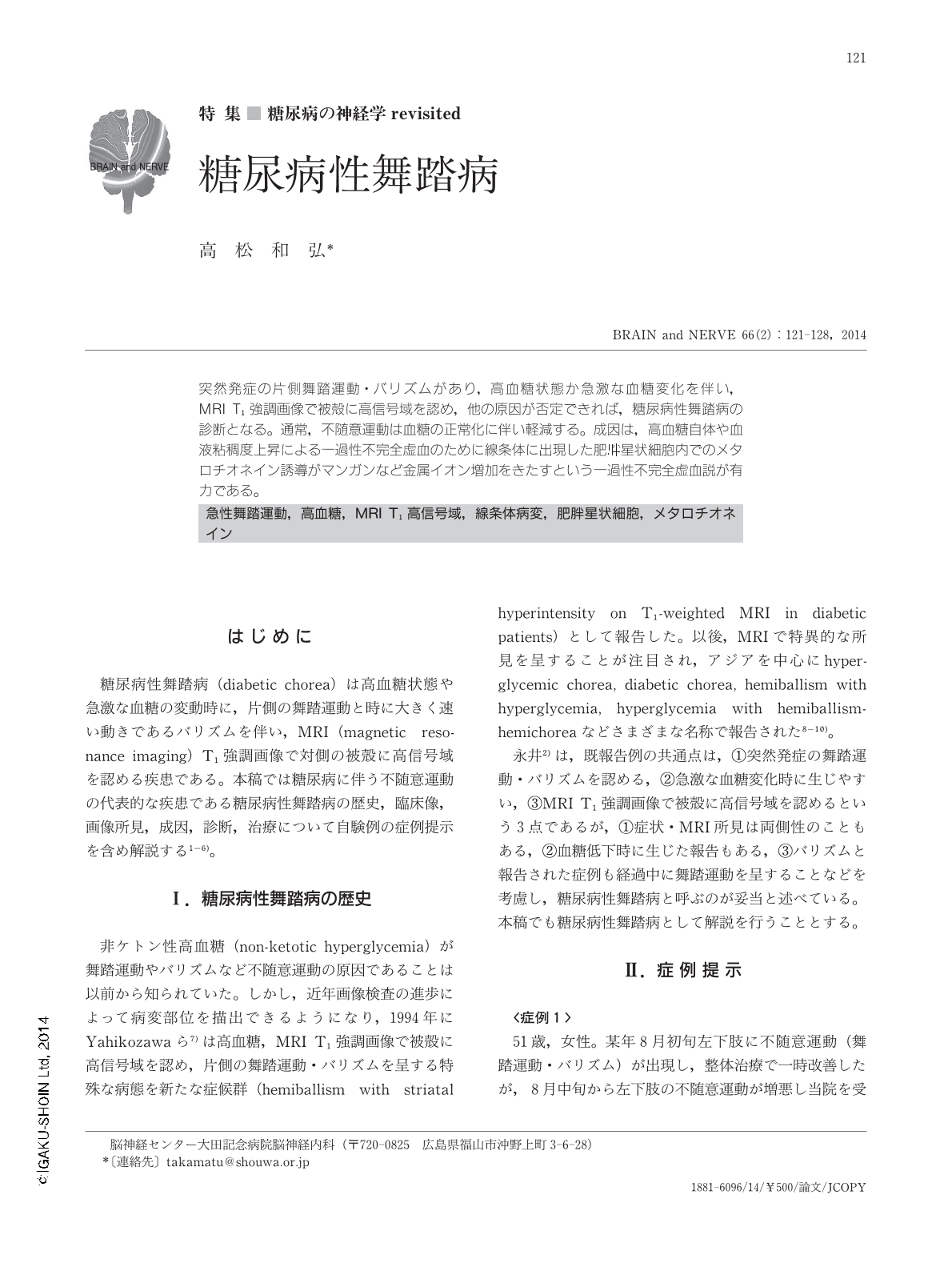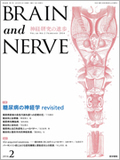Japanese
English
- 有料閲覧
- Abstract 文献概要
- 1ページ目 Look Inside
- 参考文献 Reference
突然発症の片側舞踏運動・バリズムがあり,高血糖状態か急激な血糖変化を伴い,MRI T1強調画像で被殻に高信号域を認め,他の原因が否定できれば,糖尿病性舞踏病の診断となる。通常,不随意運動は血糖の正常化に伴い軽減する。成因は,高血糖自体や血液粘稠度上昇による一過性不完全虚血のために線条体に出現した肥胖星状細胞内でのメタロチオネイン誘導がマンガンなど金属イオン増加をきたすという一過性不完全虚血説が有力である。
Abstract
Diabetic chorea is characterized by acute hemichorea, as observed on striatal T1 magnetic resonance imaging (MRI), and is associated with hyperglycemia. Acute involuntary movements begin with the onset of hyperglycemia. This condition produces characteristic MR images, which are the key diagnostic feature. Contralateral T1 MRI hyperdensities have been observed in virtually all cases and are used as a diagnostic measure. In some cases, smaller, less dense lesions are seen on the ipsilateral side. The putamen is always involved, whereas the caudate and globus pallidus are involved occasionally. This lesion is usually well delineated and does not follow vascular distribution. Diffusion-weighted imaging (DWI) and the apparent diffusion coefficient show restricted diffusion on the corresponding side of the putamen. Increased susceptibility (hypodensity) is observed using susceptibility-weighted imaging (SWI). Perhaps the most parsimonious explanation for the imaging results is that they represent gemistocytes. Pathological studies have confirmed the presence of gemistocytes, and these findings are consistent with T1, T2, DWI, and SWI MRI sequence findings. The zinic-laden metallothionein protein in the gemistocytes is the primary reason for the diagnostic imaging findings. The first avenue of treatment is to address the underlying hyperglycemia. As the hyperglycemia decreases, the chorea improves over the subsequent days or weeks, in most cases. If the chorea is uncomfortable, disabling, or persistent, symptomatic therapy (e.g., administration of haloperidol, a dopamine antagonist) should be initiated.

Copyright © 2014, Igaku-Shoin Ltd. All rights reserved.


